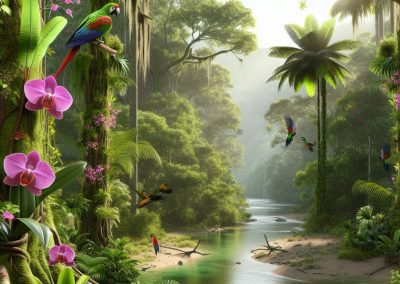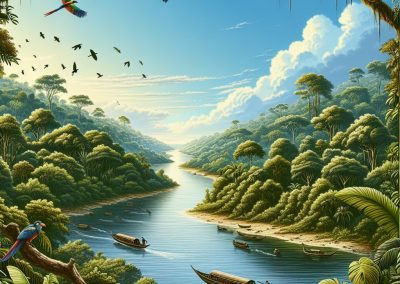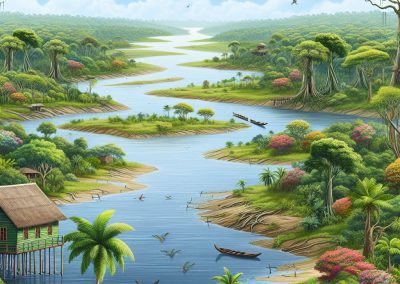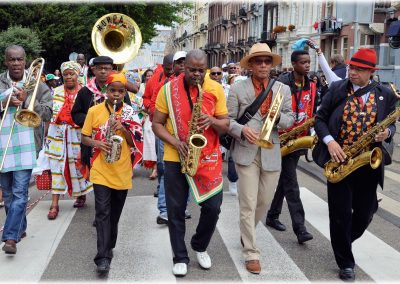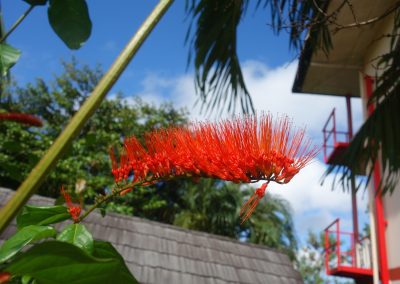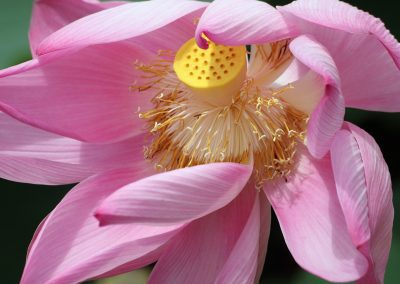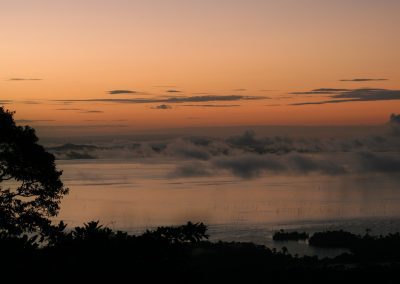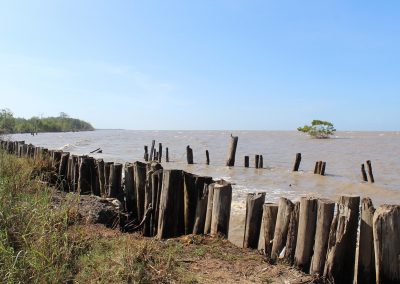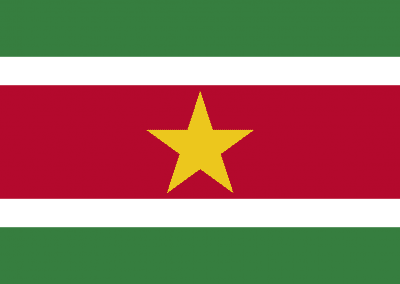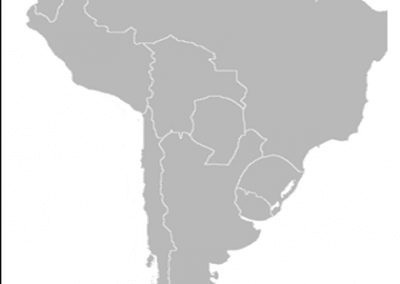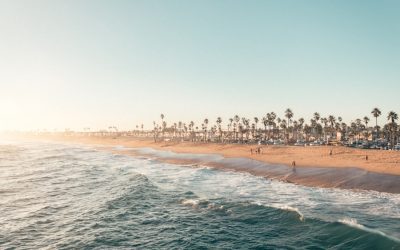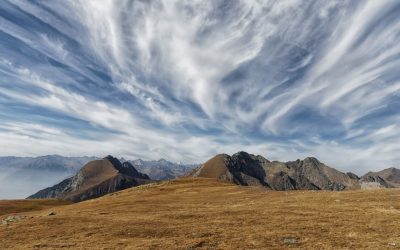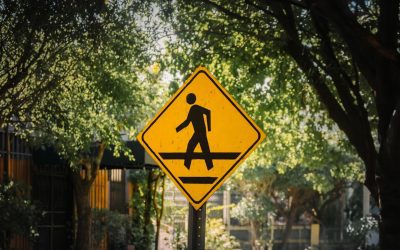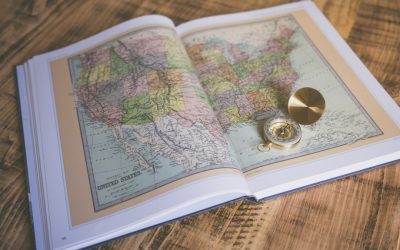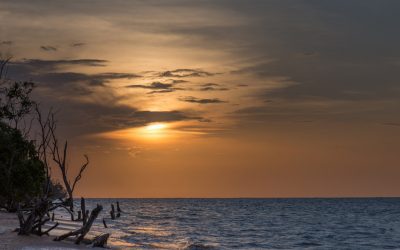Suriname
(Republiek Suriname (Republic of Suriname))
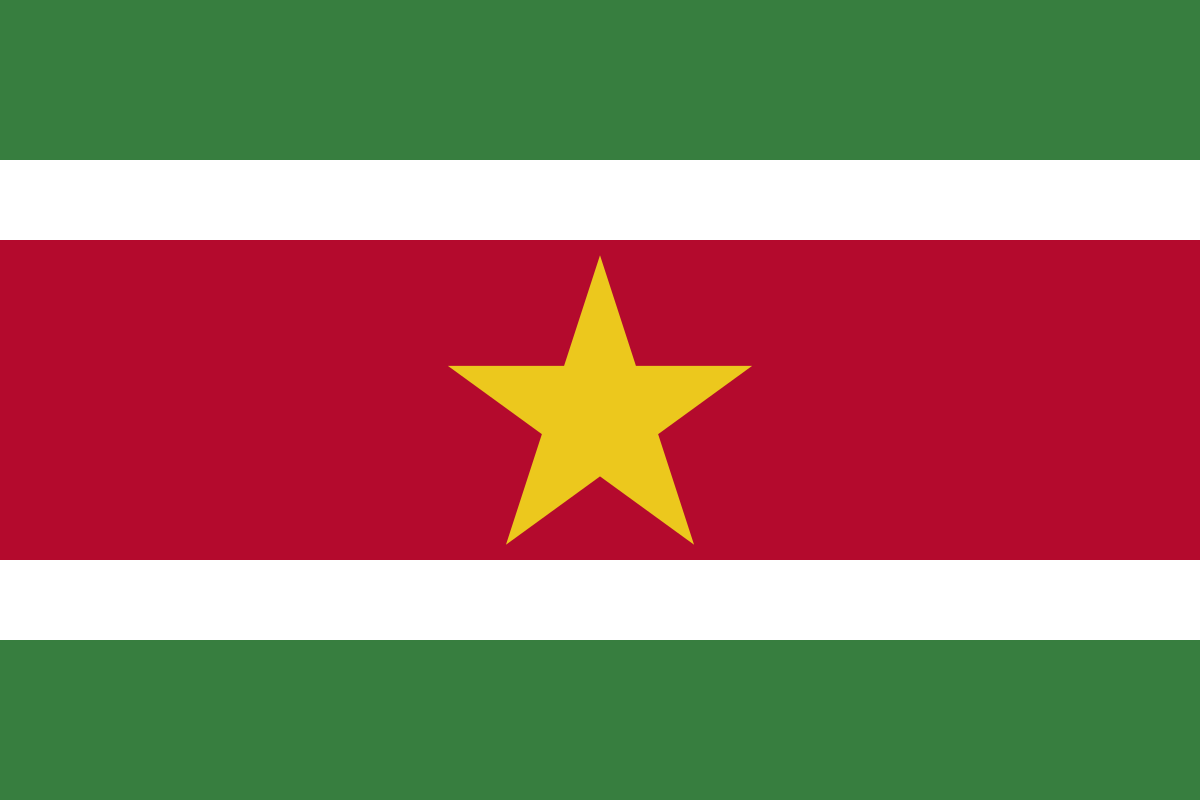
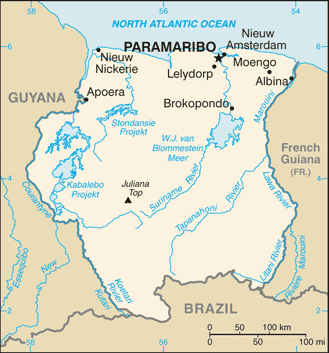

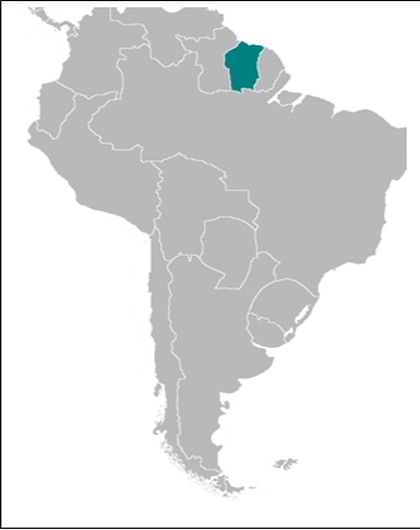

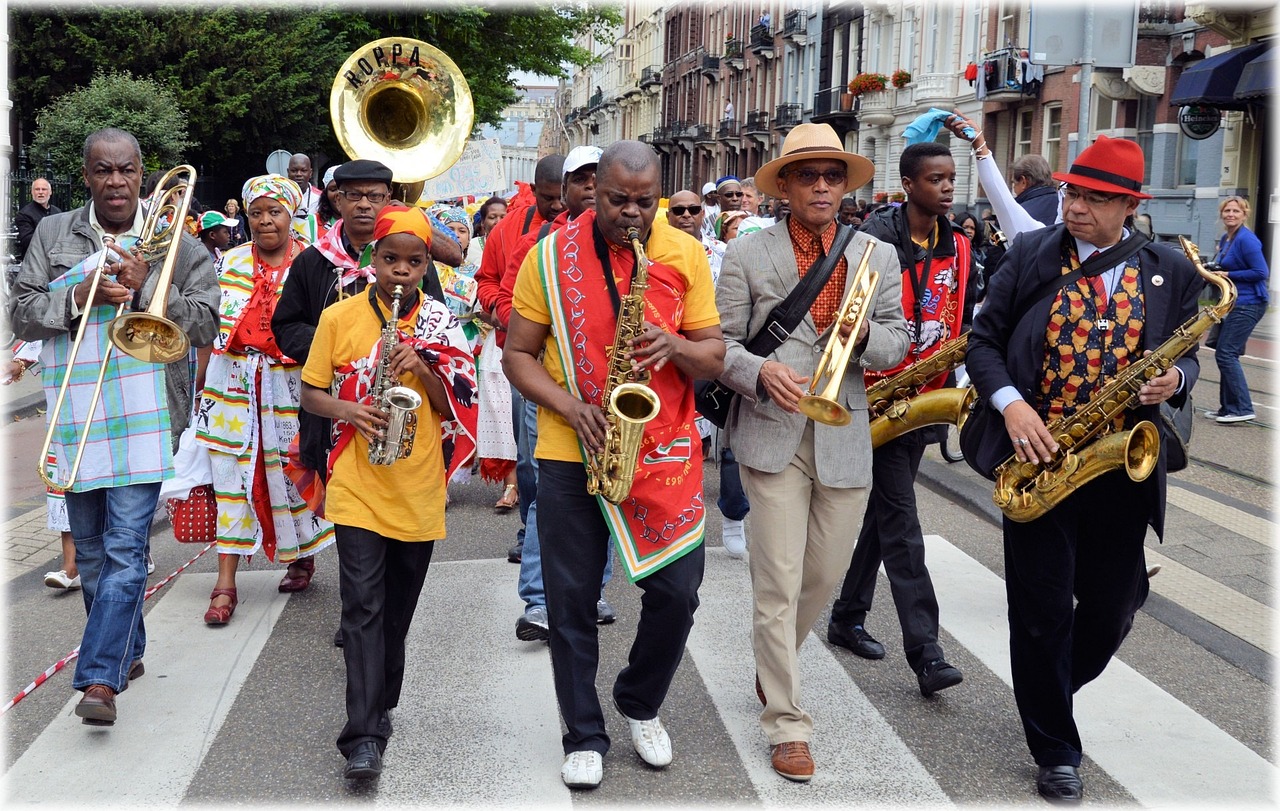
Capital: Paramaribo
Population (Estimated July 2012): 560,157
Area: 163,820km2 or 63,251mi2
Currency: Suriname Dollar (SRD)
Official Language: Dutch
Political Information: Democratic Republic
Official Religion: No Official Religion
(approximately 27.4% of the population are Hindu, 25.2% are Protestant, 22.8% are Roman Catholic, 19.6% are Muslim and 5% have Indigenous beliefs)
Highest Mountain: Juliana Top (Mountain Peak) at 1,280m or 4,199ft
GDP Official Exchange Rate (OER is more precise at gauging a country’s economic power)
(Estimated 2011): $3.79 billion (US$) or (GBP)
GDP (OER) Per Capita (per member of the population estimated 2011): (US$) or (GBP)
GDP Purchasing Power Parity (PPP is good for gauging living conditions and the use of resources but is not as accurate as OER. This data has been calculated based on the sum value of all goods and services produced in the country valued at prices prevailing in the United States)
(Estimated 2011): $5.125 billion (US$) or (GBP)
GDP (PPP) Per Capita (per member of the population estimated 2011): $9,600 (US$) or (GBP)
Time Zone (GMT/UTC): -3:00
Wildlife:
Counties/Provinces/States: 10 districts (distrikten, singular – distrikt); Brokopondo, Commewijne, Coronie, Marowijne, Nickerie, Para, Paramaribo, Saramacca, Sipaliwini, Wanica
Leaders: President Dési Delano Bouterse; Vice President Robert Ameerali
Additional: Gained independence from the Netherlands on the 25th of November 1975.
Sources: CIA World Fact Book, Encyclopaedia Britannica.
Suriname
Suriname, a small nation located on the northeastern coast of South America, is bordered by the Atlantic Ocean to the north, French Guiana to the east, Brazil to the south, and Guyana to the west. The country covers an area of approximately 163,820 square kilometres, making it one of the smallest countries on the continent. Its geography is characterised by a vast expanse of tropical rainforest, which constitutes around 93% of its land area.
The terrain is predominantly flat, with a few low mountain ranges in the southern region, including the Tumuc-Humac mountains. The rivers that traverse Suriname, such as the Suriname River and the Marowijne River, play a crucial role in the country’s ecology and economy, serving as vital transportation routes and sources of freshwater.
The wet season typically spans from December to July, characterised by heavy rainfall and high humidity, while the dry season occurs from August to November. Average temperatures range from 24°C to 31°C throughout the year, with little variation. This warm climate supports a rich biodiversity, making Suriname one of the most ecologically diverse countries in the world.
The combination of its geographical features and climatic conditions creates an environment that is not only conducive to a variety of flora and fauna but also presents unique challenges for sustainable development and conservation efforts.
Summary
- Suriname is located on the northeastern coast of South America and has a tropical rainforest climate with high levels of biodiversity.
- The history of Suriname is marked by Dutch colonial influence and the legacy of the transatlantic slave trade, which has shaped the country’s cultural diversity.
- Suriname is home to a rich tapestry of cultures and languages, with Dutch being the official language and Sranan Tongo, Javanese, and Hindi also widely spoken.
- The economy of Suriname is heavily reliant on natural resources such as bauxite, gold, and oil, but the country faces challenges in diversifying its economy.
- Suriname’s wildlife and biodiversity are incredibly diverse, with the country being home to a wide variety of species including jaguars, giant river otters, and a vast array of bird species.
History and Colonial Influence in Suriname
Indigenous Roots
Before European contact, the region was inhabited by various indigenous groups, including the Arawaks and Caribs.
Dutch Colonisation and the Slave Trade
In the early 17th century, Dutch settlers arrived in search of lucrative sugar plantations. The Dutch West India Company established control over the territory in 1667 after signing the Treaty of Breda with the British, who had previously claimed it. This marked the beginning of a long period of Dutch colonial rule that would shape Suriname’s social and economic landscape. The colonial era saw the establishment of sugarcane plantations that relied heavily on enslaved African labour.
These communities developed their own distinct cultures and social structures, which have had a lasting impact on Surinamese society. The abolition of slavery in 1863 marked a turning point in Suriname’s history, leading to a shift in labour dynamics as indentured servants from India and Java were brought in to work on plantations. This influx of diverse populations contributed to the multicultural fabric of modern Suriname.
Cultural Diversity and Languages in Suriname
Suriname is renowned for its remarkable cultural diversity, which is a direct result of its complex history of colonisation and migration. The population comprises various ethnic groups, including Creole, Hindustani, Javanese, Indigenous peoples, Chinese, and Lebanese communities. Each group has contributed unique traditions, customs, and culinary practices that enrich the national identity.
This multiculturalism is celebrated through numerous festivals and events throughout the year, such as Diwali, Eid al-Fitr, and the Javanese New Year. Linguistically, Suriname is equally diverse. The official language is Dutch, a remnant of its colonial past; however, several other languages are widely spoken.
Sranan Tongo, an English-based creole language, serves as a lingua franca among different ethnic groups and is often used in informal settings. Additionally, Hindi is spoken within the Hindustani community, while Javanese is prevalent among those of Indonesian descent. Indigenous languages such as Arawak and Carib are also present but are at risk of extinction due to declining numbers of speakers.
This linguistic variety reflects the rich tapestry of cultural influences that define Suriname.
Economy and Natural Resources of Suriname
Suriname’s economy is primarily driven by its abundant natural resources, particularly bauxite, gold, and oil. Bauxite mining has historically been a cornerstone of the economy since the mid-20th century when Suriname became one of the world’s leading producers. The industry has attracted foreign investment and has been a significant source of export revenue.
However, fluctuations in global commodity prices can impact economic stability, making diversification essential for long-term growth. In recent years, gold mining has gained prominence as a vital sector in Suriname’s economy. The discovery of significant gold reserves has led to increased foreign investment and exploration activities.
While this has provided economic opportunities, it has also raised concerns regarding environmental degradation and social impacts on local communities. Oil exploration off the coast has further diversified the economy; however, it remains in its nascent stages compared to other resource sectors. Sustainable management of these resources is crucial for ensuring that economic growth does not come at the expense of environmental integrity or social equity.
Wildlife and Biodiversity in Suriname
Suriname is home to an extraordinary array of wildlife and biodiversity due to its extensive tropical rainforests and varied ecosystems. Approximately 80% of the country is covered by forested areas that provide habitats for countless species of flora and fauna. The Amazon rainforest extends into Suriname, making it part of one of the most biodiverse regions on Earth.
The country boasts over 500 species of birds, including the iconic harpy eagle and various toucan species. Additionally, it is home to numerous mammals such as jaguars, tapirs, and howler monkeys. The rich aquatic ecosystems found in Suriname’s rivers and coastal areas further enhance its biodiversity.
The country’s rivers are teeming with fish species, including piranhas and arapaima, while its coastal waters support populations of manatees and sea turtles. Conservation efforts are increasingly important as deforestation and illegal wildlife trade pose significant threats to these ecosystems. Protected areas such as the Central Suriname Nature Reserve have been established to safeguard biodiversity while promoting ecotourism as a sustainable economic alternative.
Politics and Government in Suriname
Government Structure
The President serves as both head of state and government and is elected for a five-year term by popular vote. The National Assembly consists of representatives elected through proportional representation, reflecting the diverse political views within the country.
Challenges to Political Stability
Political stability has been a challenge for Suriname due to historical coups and periods of authoritarian rule. However, recent years have seen a return to democratic governance with regular elections.
Contemporary Political Issues
Political parties often represent specific ethnic or cultural groups, which can lead to fragmentation within the political system. Issues such as corruption, economic inequality, and environmental concerns remain central to political discourse as citizens advocate for greater transparency and accountability from their leaders.
Future Prospects
The country continues to navigate its complex political landscape, with citizens pushing for a more stable and equitable future.
Tourism and Attractions in Suriname
Tourism in Suriname is an emerging sector that offers unique opportunities for visitors seeking adventure and cultural experiences. The country’s natural beauty is a significant draw for ecotourism enthusiasts who wish to explore its pristine rainforests, rivers, and wildlife. Popular destinations include the Central Suriname Nature Reserve, a UNESCO World Heritage site known for its biodiversity and stunning landscapes.
Visitors can engage in activities such as hiking, birdwatching, and guided tours led by local indigenous communities who share their knowledge about traditional practices. Cultural tourism also plays an essential role in attracting visitors to Suriname. The capital city, Paramaribo, is recognised for its well-preserved colonial architecture and vibrant cultural scene.
The historic inner city features wooden buildings that reflect Dutch colonial influence alongside local styles. Festivals celebrating various ethnic traditions provide insight into Surinamese culture through music, dance, and cuisine. As tourism infrastructure continues to develop, there is potential for growth in this sector while promoting sustainable practices that benefit local communities.
Challenges and Future Prospects for Suriname
Despite its rich natural resources and cultural diversity, Suriname faces several challenges that could hinder its development prospects. Environmental degradation resulting from mining activities poses significant risks to biodiversity and local communities reliant on natural resources for their livelihoods. Balancing economic growth with environmental sustainability will require robust policies that prioritise conservation efforts while allowing for responsible resource extraction.
Social issues such as poverty and inequality also present obstacles to progress in Suriname. While some sectors have experienced growth due to resource extraction, many citizens remain vulnerable to economic fluctuations and lack access to essential services such as education and healthcare. Addressing these disparities will be crucial for fostering social cohesion and ensuring that all citizens benefit from national development initiatives.
Looking ahead, Suriname has opportunities to leverage its unique assets for sustainable growth. By investing in ecotourism and promoting cultural heritage preservation alongside responsible resource management practices, the country can create pathways towards a more resilient economy that respects both its environment and diverse population. Engaging local communities in decision-making processes will be vital for fostering inclusive development that reflects the aspirations of all Surinamese people.
Suriname, a small country in South America, is known for its diverse culture and stunning natural beauty. One related article worth exploring is about the array of wildlife found in Suriname’s lush rainforests. From colourful birds like the Guianan cock-of-the-rock to elusive jaguars and giant river otters, Suriname is a paradise for nature lovers. To learn more about the incredible biodiversity of Suriname, check out the article here.
FAQs
What is the capital of Suriname?
The capital of Suriname is Paramaribo.
What is the population of Suriname?
As of 2021, the population of Suriname is estimated to be around 600,000 people.
What is the official language of Suriname?
The official language of Suriname is Dutch.
What is the currency used in Suriname?
The currency used in Suriname is the Surinamese dollar (SRD).
What is the climate like in Suriname?
Suriname has a tropical rainforest climate, with high temperatures and humidity throughout the year. The country experiences a rainy season from April to August and a dry season from August to December.
What are the major industries in Suriname?
The major industries in Suriname include bauxite and gold mining, agriculture (particularly rice and bananas), and tourism.
What are the popular tourist attractions in Suriname?
Popular tourist attractions in Suriname include the historic inner city of Paramaribo (a UNESCO World Heritage Site), the Central Suriname Nature Reserve, Brownsberg Nature Park, and the Suriname River.
Understanding the Political Boundaries of Suriname: Provinces, Districts, and Historical Divisions
Suriname, a small yet culturally rich nation located on the northeastern coast of South America, is bordered by the Atlantic Ocean to the north, French Guiana to the east, Brazil to the south, and Guyana to the west. Its political boundaries are not merely lines on a map; they represent a complex interplay of historical, cultural, and social factors that have shaped the nation’s identity. The country covers an area of approximately 163,820 square kilometres, making it one of the smallest countries in South America. Despite its size, Suriname boasts a diverse population and a wealth of natural resources, which have influenced its political landscape. The political boundaries of Suriname are delineated into several administrative divisions, including provinces and districts. These divisions play a crucial role in governance and local administration, impacting everything from resource allocation to representation in the national government. Understanding these boundaries is essential for grasping the dynamics of Suriname’s political system and the challenges it faces in terms of governance and development. The historical context of these boundaries, along with the influence of various communities within Suriname, adds layers of complexity to the nation’s political framework. Summary Suriname’s political boundaries are defined by its provinces and districts, which play a crucial role in its governance. The historical divisions, influenced by colonialism, continue to impact modern political boundaries in Suriname. Provinces and districts in Suriname have specific roles in governance, including resource management and local administration. Challenges and controversies surrounding Suriname’s political boundaries include issues of representation and resource allocation. The influence of colonialism on Suriname’s political divisions has shaped the country’s current political landscape and...
Exploring Suriname’s Natural Resources: Locations and Discoveries
Suriname, a small yet ecologically rich country located on the northeastern coast of South America, is endowed with a wealth of natural resources that play a pivotal role in its economy and cultural identity. The nation is characterised by its vast rainforests, extensive river systems, and mineral-rich landscapes, which have attracted both local and international interest for decades. Suriname‘s natural resources include bauxite, gold, timber, and a variety of agricultural products, all of which contribute significantly to the livelihoods of its inhabitants and the overall economic framework of the country. The abundance of these resources has not only shaped Suriname’s economic landscape but has also influenced its social and environmental dynamics. The extraction and utilisation of these resources often come with challenges, including environmental degradation and social displacement. However, there is a growing recognition of the need for sustainable practices that balance economic development with ecological preservation. This article delves into the various natural resources of Suriname, exploring their extraction processes, economic implications, and the ongoing efforts to ensure sustainability in their use. Summary Suriname is rich in natural resources, including bauxite, gold, timber, oil, and gas, making it an important player in the global market. Bauxite mining in Moengo has been a major economic driver for Suriname, with the country being one of the top 10 producers of bauxite in the world. Gold mining in Brokopondo has also contributed significantly to Suriname’s economy, but has raised concerns about environmental impact and sustainability. Timber logging in the Amazon Rainforest has been a contentious issue, with efforts to balance economic gain with conservation of the world’s largest rainforest. Eco-tourism in...
Climate Zones of Suriname: Exploring Suriname’s Varied Climates
Suriname, a small yet ecologically rich country located on the northeastern coast of South America, boasts a remarkable diversity of climate zones. This diversity is largely attributed to its geographical position, topography, and the influence of various climatic systems. The country is bordered by the Atlantic Ocean to the north, Brazil to the south, and French Guiana to the east, which collectively contribute to its unique weather patterns. Suriname‘s climate can be broadly categorised into several distinct zones, each characterised by its own temperature ranges, precipitation levels, and seasonal variations. Understanding these climate zones is essential for appreciating the rich biodiversity and cultural practices that thrive within this South American gem. The climate of Suriname is predominantly tropical, with high humidity and temperatures that typically hover around 27 to 30 degrees Celsius throughout the year. However, the interplay of different climatic influences creates a mosaic of microclimates across the country. From the lush tropical rainforests that dominate the interior to the drier savanna regions in the south, each zone supports a unique array of flora and fauna. This article delves into the various climate zones of Suriname, exploring their characteristics, implications for biodiversity, and the impact on human activities. Summary Suriname has a diverse range of climate zones, including tropical rainforest, savanna, tropical monsoon, subtropical, highland, and coastal climates. The tropical rainforest climate in Suriname is characterized by high temperatures, heavy rainfall, and lush vegetation, making it a biodiverse and ecologically rich region. The savanna climate in Suriname features a dry season and a wet season, with grasslands and scattered trees dominating the landscape. Suriname’s tropical monsoon climate experiences...
Exploring Suriname’s Cultural and Historical Sites
Suriname, a small yet vibrant nation located on the northeastern coast of South America, is a treasure trove of cultural and historical significance. With a rich tapestry woven from the threads of its indigenous peoples, colonial past, and diverse immigrant communities, Suriname offers a unique glimpse into the confluence of various cultures. The country’s historical sites are not merely remnants of the past; they are living narratives that reflect the struggles, triumphs, and everyday lives of its people. From the bustling streets of Paramaribo to the serene landscapes of its interior, each site tells a story that contributes to the national identity. The significance of these cultural and historical sites extends beyond mere tourism; they are vital for understanding Suriname’s complex history. The influences of indigenous tribes, European colonisers, African slaves, and Asian indentured labourers have all left indelible marks on the nation’s cultural landscape. As such, these sites serve as important educational resources, offering insights into the diverse heritage that shapes contemporary Surinamese society. Visitors to Suriname are not just observers; they become participants in a living history that continues to evolve. Summary Suriname is home to a rich cultural and historical heritage, with a unique blend of indigenous, colonial, and religious influences. The Historic Inner City of Paramaribo is a UNESCO World Heritage Site, showcasing the country’s colonial architecture and vibrant cultural scene. Visitors can immerse themselves in the indigenous cultures and traditions of Suriname, learning about the customs and beliefs of the country’s diverse ethnic groups. Exploring the plantation and slavery history of Suriname offers a sobering look at the country’s past, with opportunities to visit...
Exploring Suriname’s Diverse Terrain: Mountains, Valleys, and Plains
Suriname, a small yet captivating country located on the northeastern coast of South America, is renowned for its extraordinary and varied terrain. Spanning approximately 163,000 square kilometres, it is bordered by French Guiana to the south, Brazil to the southwest, and Guyana to the west. The nation is characterised by its rich tapestry of ecosystems, ranging from dense rainforests and majestic mountains to expansive savannahs and coastal plains. This diversity is not merely a geographical feature; it is a vital component of Suriname‘s identity, influencing its culture, economy, and the lives of its inhabitants. The country’s landscape is predominantly shaped by its tropical climate, which fosters an abundance of flora and fauna. Suriname’s terrain is a mosaic of natural wonders, including the Amazon rainforest, which covers a significant portion of the country. This lush environment is home to countless species of plants and animals, many of which are endemic to the region. The interplay between the various geographical features creates a unique ecological balance that supports both terrestrial and aquatic life. As one traverses the country, the dramatic shifts in scenery—from towering mountains to serene valleys—offer a glimpse into the intricate relationship between nature and the people who inhabit this remarkable land. Summary Suriname’s diverse terrain offers a range of landscapes, from mountains to valleys and plains. The Tumuc-Humac Mountains stand majestically, offering stunning views and challenging hikes. The lush valleys of Suriname are a sight to behold, with their vibrant greenery and diverse flora and fauna. The vast plains of the coastal region provide a different kind of beauty, with their open spaces and unique ecosystems. Voltzberg and...
Exploring the Fascinating History of Suriname
Suriname, a small nation located on the northeastern coast of South America, is home to a rich tapestry of Indigenous cultures that have thrived for thousands of years. The original inhabitants of this land include several distinct groups, such as the Arawaks, Caribs, and the Wayana, each with their own unique languages, traditions, and social structures. The Arawaks, known for their agricultural practices, cultivated crops like cassava and maize, while the Caribs were renowned for their seafaring skills and warrior culture. The Wayana, residing primarily in the interior regions, maintained a more nomadic lifestyle, relying on hunting and gathering in the dense rainforests. The Indigenous peoples of Suriname have a profound connection to their environment, which is reflected in their spiritual beliefs and cultural practices. Many tribes view the forest as a living entity, imbued with spirits that guide and protect them. This reverence for nature is evident in their art, music, and oral traditions, which often celebrate the flora and fauna of the region. Despite facing significant challenges from external forces throughout history, including colonisation and resource exploitation, these communities have demonstrated remarkable resilience. Today, they continue to advocate for their rights and strive to preserve their cultural heritage in the face of modernisation and environmental threats. Summary The Indigenous Peoples of Suriname have a rich and diverse cultural heritage, including the Arawak, Carib, and Warao tribes. The Colonial Period saw Dutch settlement and the establishment of plantations, leading to the importation of African slaves to work on the sugar, coffee, and cocoa plantations. Slavery had a profound impact on Suriname’s history, shaping its economy, society, and culture...
Exploring Suriname’s Population Density
Suriname, a small nation located on the northeastern coast of South America, is characterised by its unique geographical and demographic features. With a total land area of approximately 163,820 square kilometres, it is one of the least densely populated countries in the world, boasting a population of around 600,000 inhabitants. This results in a population density of roughly 3.7 people per square kilometre, which starkly contrasts with many other nations globally. The low population density can be attributed to Suriname‘s vast expanses of rainforest and its relatively small urban centres, which together create a complex tapestry of human habitation. The distribution of Suriname’s population is not uniform; it is heavily concentrated in certain areas while vast regions remain sparsely populated. The capital city, Paramaribo, is home to a significant portion of the population, serving as the political, economic, and cultural hub of the country. This urban concentration highlights the challenges and opportunities that arise from such demographic patterns. Understanding the nuances of Suriname’s population density is essential for addressing issues related to urban planning, resource allocation, and sustainable development. Summary Suriname has a relatively low population density compared to other countries, with most of its population concentrated in the coastal areas. Factors affecting population distribution in Suriname include geography, infrastructure, and economic opportunities. The urban population in Suriname is growing, leading to increased pressure on infrastructure and services in urban areas. Suriname’s ethnic diversity contributes to the country’s population density, with different ethnic groups settling in specific regions. Challenges of population density in Suriname include urban sprawl, strain on resources, and the need for sustainable development to manage population...
Exploring the Hidden Gems of Suriname: A Journey Through South America’s Best-Kept Secret
Suriname, located on the northeastern coast of South America, is often referred to as the continent’s hidden gem. This small country, bordered by Guyana to the west, French Guiana to the east, Brazil to the south, and the Atlantic Ocean to the north, offers a unique travel experience that is unlike any other in the region. Suriname has a rich and diverse history that dates back centuries. It was originally inhabited by indigenous peoples, but was later colonized by the Dutch in the 17th century. The country gained independence in 1975, but still retains strong ties to its colonial past. What sets Suriname apart from other South American destinations is its cultural diversity. The population of Suriname is made up of various ethnic groups, including Creoles, Maroons, Hindustanis, Javanese, Chinese, and indigenous peoples. This melting pot of cultures has resulted in a vibrant and unique society that is reflected in its music, dance, art, and cuisine. Summary Suriname is a hidden gem in South America with rich cultural heritage and unspoiled natural beauty. The country’s colonial past is fascinating and worth exploring, with many historical sites to visit. Suriname’s cuisine is a unique fusion of cultures, offering a delicious and diverse culinary experience. The vibrant nightlife of Paramaribo is a must-see, with plenty of bars, clubs, and live music venues. Journeying through Suriname’s remote indigenous communities and ecotourism hotspots is a great way to experience the country’s natural beauty and cultural diversity. Discovering the Rich Cultural Heritage of Suriname One of the highlights of visiting Suriname is experiencing its rich cultural heritage. The country’s population is incredibly diverse, with...


